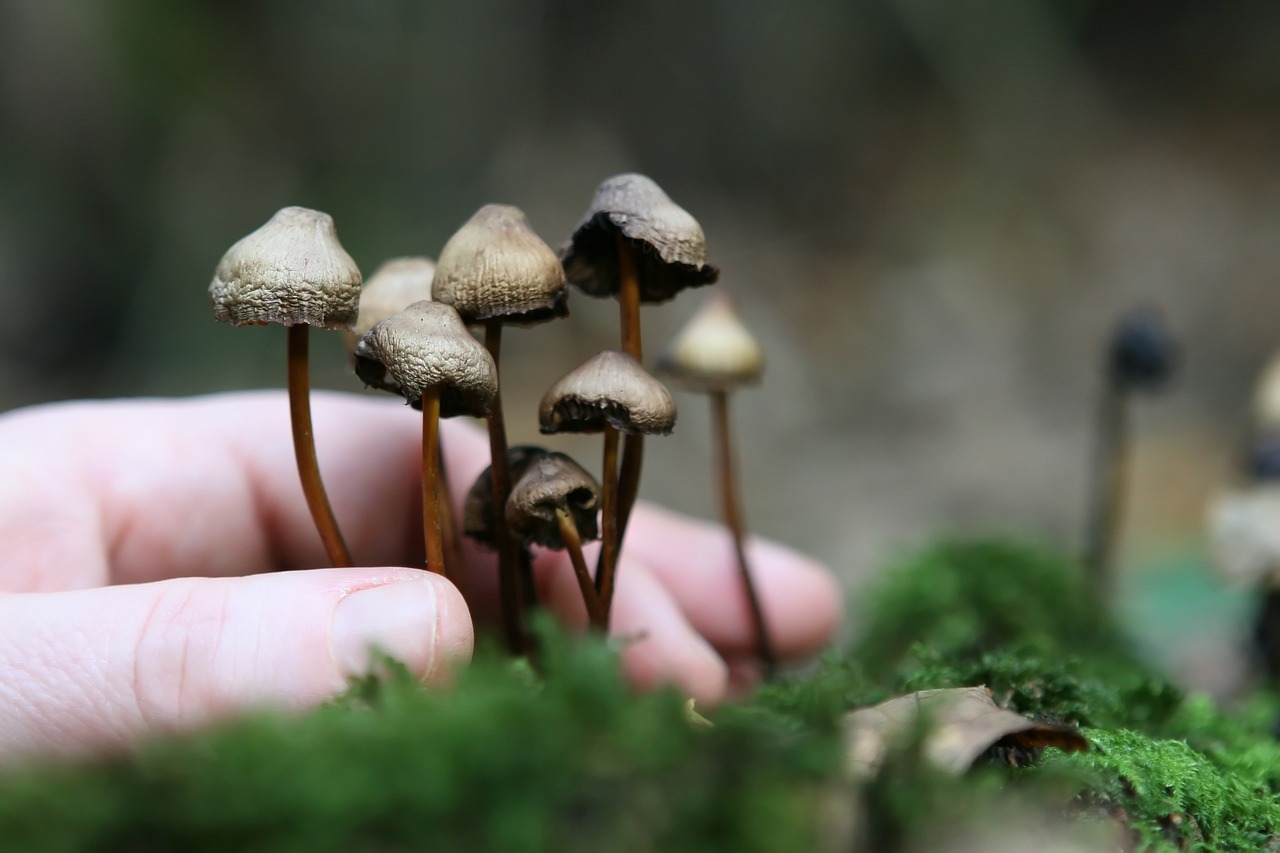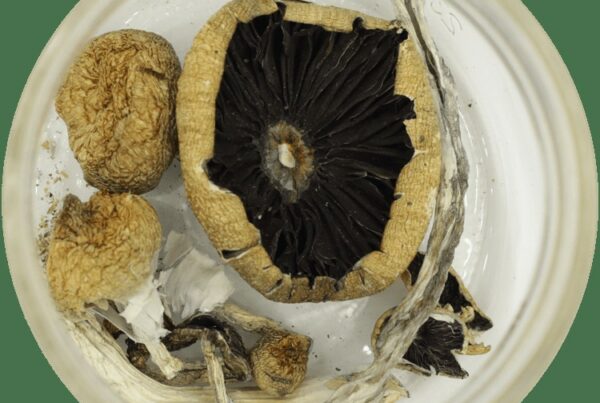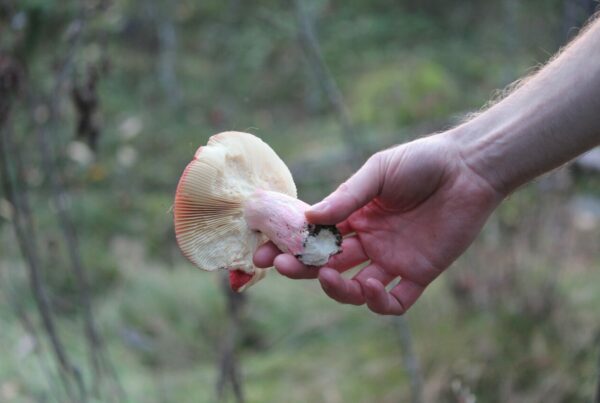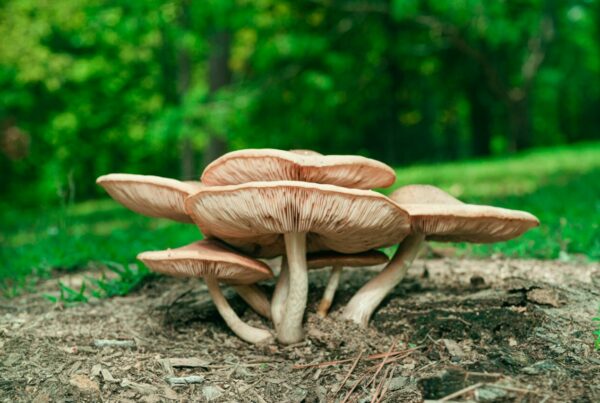Decoding Mycelium
Mycelium, the vegetative part of a fungus, acts much like a digestive system for mushrooms. It hunts for nutrients, breaks them down into a digestible form for the fungus, and thereby feeds the fungus. This process enriches the surrounding soil with essential nutrients, creating a nutrient-rich biomass that serves as an excellent gardening mulch.
Beyond their role in mushroom growth, mycelium networks play a crucial part in supporting the health and growth of numerous land-based plants, including trees. For example, tree roots form a symbiotic relationship with fungi: the tree supplies the fungus with carbon in the form of sugars, and the fungus reciprocates by providing the tree with vital minerals like nitrogen and phosphorus. You can learn more about this symbiosis here.
Fascinatingly, mycelium networks function as an underground communication network among plants, akin to our brain’s neural networks. Recent scientific studies suggest that plants and trees may have basic nervous systems that fungi could potentially influence, affecting processes like communication, memory, and learning. Furthermore, mycelium enhances soil health by breaking down decaying organic matter and neutralizing any present pollutants.
If you’re considering growing magic mushrooms, understanding mycelium development is key. Though the cultivation process might be daunting for beginners, acquiring knowledge about mycelium is an essential first step. While purchasing mushrooms from Buy Magic Mushrooms Canada online is always an option, understanding mycelium can elevate your cultivation journey.
Mycelium Growth Process
Upon encountering a suitable growth environment, fungal spores begin to develop two types of mycelium. The first type, termed primary or monokaryotic mycelium, features a single nucleus in each cell and is usually not visible to the naked eye. The second type, referred to as secondary or dikaryotic mycelium, is visible and comprises two nuclei in each cell.
When fungal spores begin to germinate, they form an initial growth known as the monokaryotic mycelium. When this primary mycelium encounters another compatible monokaryotic mycelium, they combine to create the second stage, referred to as the dikaryotic mycelium. It is this secondary mycelium that has the capacity to produce mushrooms or sclerotia.
Different Types of Mycelia
There are three categories of mycelia, two of which signal successful cultivation.
- Rhizomorphic mycelia are string-like and easy to recognize. They, like all mycelia, are made up of units known as hyphae. The rhizomorphs form a network of grouped hyphae. Rhizomorphic mycelia first spread out and then send chemical signals back to the colony, indicating that the area ahead is nutrient-rich. The remaining mycelia then continue to follow this path. The hyphae at the front end of the rhizomorphic mycelia secrete a substance known as peroxidase, which breaks down the material in front of it for food. The nutrients are then distributed throughout the colony as the hyphae expand over the material. Many cultivators prefer this type of mycelia due to its tendency to produce more mushrooms from the substrate.
- Tomentose, or “Fluffy” mycelia, have more commonalities than differences with Rhizomorphic mycelia. However, the structure of the fluffy mycelia strands is distinct. These strands, though not immediately visible, are surely there, forming a cotton-ball-like appearance due to their clustering. The formation of either tomentose or rhizomorphic mycelia largely depends on the growing conditions. The influence of the type of mycelia on the growth rate or yield quantity remains a topic of debate among cultivators.
- Aerial mycelia develop when the growing conditions are not ideal. In such cases, the mycelia tend to grow outward instead of spreading across the medium or forming a ball. This type of mycelia, often mistaken for bacterial infection, can interfere with your mushroom cultivation, leading to smaller and weaker mushrooms. Inadequate fresh air exchange and excessive humidity typically result in the occurrence of aerial mycelia.
Is it Mould or Mycelium?
Distinguishing between mould and mycelium is essential. If you observe green, blue, grey, or black patches on or within your fruiting box, it is likely that your culture is contaminated. Discolouration is the primary sign of contamination. However, the presence of blue spots could simply indicate bruising.
Cobweb moulds are typically easy to spot. Instead of the bright The Mycelium is generally characterized by a greyish tint and a fluffy, fibrous structure. While cobweb moulds and green moulds pose no risk to human health, they can potentially harm your mushrooms.
Buy Magic Mushrooms Canada: Your Ultimate Mushroom Guide
Whenever you ponder about psychedelic mushrooms in Canada, let Buy Magic Mushrooms Canada be your first thought. Our continuous goal is to deliver substantial information that ensures a secure and pleasurable journey with mushrooms.





